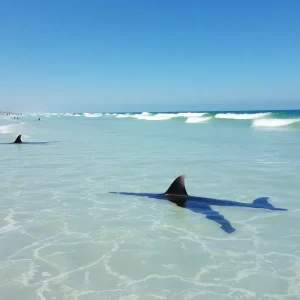Myrtle Beach Golf Courses: The Costly Challenge of Keeping Play Alive
If you ever find yourself flying into Myrtle Beach, the sprawling greens and golf courses might just catch your eye from above. Nestled amidst the Lowcountry beauty are dozens of golf courses that make this coastal city a golfer’s paradise. With courses dotted from Pawleys Island to North Myrtle Beach, it’s clear that golf is woven into the fabric of this community. However, what lurks beneath those picturesque fairways is a brewing storm of financial difficulties that courses are grappling with.
The Numbers Game
Just think about it: maintaining a golf course isn’t cheap. Costs are often in the millions due to maintenance, staffing, and the unique characteristics of each course. Despite the breathtaking surroundings, golf course management is an uphill battle of small profit margins and lofty expectations from players who demand lush greens and pristine conditions. Jeremy Goldblatt, COO of KemperSports, knows this all too well. He describes golf courses as “a truly living, breathing organism” that requires constant feeding, watering, and care.
In the Myrtle Beach area, the dynamics vary, especially for public and private courses. The City of Myrtle Beach owns Whispering Pines Golf Course, while Coastal Carolina University (CCU) owns The Hackler Course. Both face unique financial strains but also have different missions guiding their operations.
The Struggles of Hackler Course
The Hackler Course, a hub for students in CCU’s PGA Golf Management program, has been operating at a loss since 2018. General Manager Chuck Johns admits that the pandemic sent revenues tumbling while the cost of essentials like grass seed skyrocketed, reaching prices as high as $2 a pound. The university is willing to incur losses here, viewing it as an investment in student training. “I have to actively keep the course growing,” said Johns, emphasizing the constant balance he must maintain.
As the course develops, infrastructure has been a major focus. Upgrades, from irrigation systems to cart paths, are essential yet costly, and Johns often finds himself doing some of the heavy lifting personally to get things done.
Whispering Pines: A Different Breed
On the flip side is Whispering Pines, one of the oldest courses in the area. While less educationally tied than Hackler, it’s not without its challenges either. Lack of transparency from the city has made it difficult to get a full financial picture of Whispering Pines, but reports indicate it is experiencing a steady increase in rounds played. And plans for renovations are on the table to enhance the player experience.
In 2023, the course saw nearly 57,000 rounds played, with about 71% of those coming from locals—evidence that the local golfing community is thriving, despite the blemishes on course management.
The Business Model Conundrum
According to Tracy Conner, the executive director of the Myrtle Beach Area Golf Course Owners Association, the business models for these two courses are vastly different. Both have significant costs, but one operates under a university’s mission while the other serves public interests and local need. The operational costs have ballooned recently, hitting golf courses hard with increases in fuel, insurance, and fertilizer pricing.
So how do golf courses keep themselves afloat? Creative solutions like expanding food and beverage services, hosting events, and even selling unique merchandise have become essential for diversifying income. Goldblatt points out that what used to be a primarily golfing revenue stream has now evolved, with courses capitalizing on trendy apparel and souvenir items to generate extra cash flow.
A Bright Future Amidst Challenges
While the maintenance of Myrtle Beach courses is financially trying, the thirst for golf in the area remains unquenched. Facilities are focusing not just on upkeep but on creating experiences that cater to diverse golfer demographics. There’s an evident push to balance the classic gameplay with a fun, laid-back atmosphere that attracts a younger audience.
As Bart Romano, Director of Operations for Caledonia Golf and Fish Club and True Blue Golf Club, puts it, “There’s a date and a rate for every golfer.” That flexible approach may well be the key to keeping the spirit of golf alive along the Grand Strand.
So, for golfers and golf lovers alike, there’s reason to be optimistic. With community focus and innovative business strategies, Myrtle Beach’s golf riches may continue to flourish, even as the grass keeps growing!





